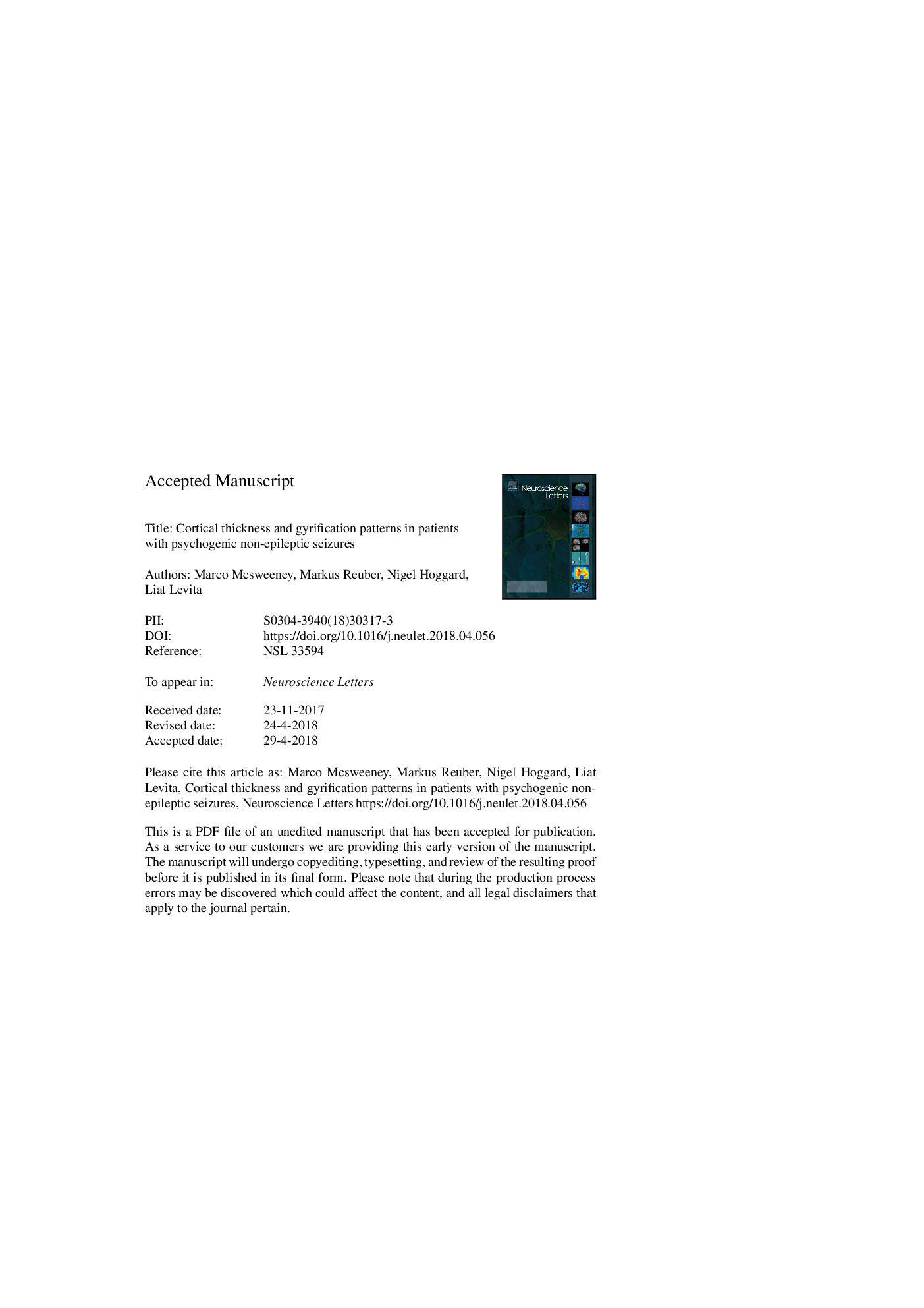| Article ID | Journal | Published Year | Pages | File Type |
|---|---|---|---|---|
| 8841476 | Neuroscience Letters | 2018 | 24 Pages |
Abstract
Psychogenic non-epileptic seizures (PNES) are often viewed as manifestations of altered motor and sensory function resulting from psychological responses to adverse experiences. Yet many patients and non-expert healthcare professionals find it difficult to understand how severe disturbances in normal neurological functioning can solely result from underlying psychological mechanisms to the exclusion of other physical causes. Perhaps importantly, recent advances using neuroimaging techniques point to possible structural and functional correlates in PNES. In an attempt to further our understanding of the neurobiological correlates of this condition, we compared the brain scans of 20 patients with PNES (14 females, mean age 41.05, range 19-62) and 20 age- and gender-matched healthy controls (14 females, mean age 40.65, range 21-61) to investigate group differences for cortical thickness and gyrification patterns using FreeSurfer. Compared to controls, patients with PNES showed cortical thickness increases in motor, sensory and occipital areas as well as cortical thickness decreases in temporal and frontal brain regions. In addition, we observed age-related changes in cortical thickness in the right lateral occipital area in PNES. However, contrary to our prediction that atypical gyrification may be present, we did not find any evidence of abnormalities on a measure thought to reflect prenatal and early childhood cortical development and organization. Nor did we find significant correlations between cortical thickness results and clinical features. These findings partly corroborate, but also differ from previous morphometric studies in PNES. These inconsistencies likely reflect the aetiology and phenomenological heterogeneity of PNES.
Keywords
Related Topics
Life Sciences
Neuroscience
Neuroscience (General)
Authors
Marco Mcsweeney, Markus Reuber, Nigel Hoggard, Liat Levita,
